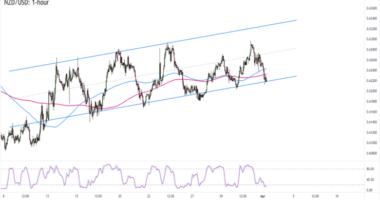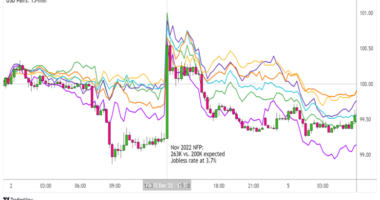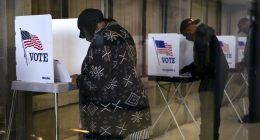The U.S. dollar gained against all major currencies today.
But the one currency that all eyes are on at the moment is the Japanese yen. More specifically, the USD/JPY currency pair.
The USD/JPY is now trading near a 32-year high! We’re talking about since 1990 when the Super Nintendo Entertainment System (SNES) was released! (Known as the Super Famicon in Japan.)
Japanese government officials have been worried about the yen’s sharp decline this year since a weaker currency increases commodity import prices (like oil) which hurts both domestic consumers and businesses.
And due to the continued strengthening of the U.S. dollar, the yen continues to move ever closer to the 150 per dollar level.
USD/JPY at 150 is considered a key psychological level. If the 150 level is breached, there’s the risk that the selling pressure of the yen would accelerate (causing USD/JPY to surge).
Yen traders assume that Japanese government officials will try to prevent this from happening and are now on high alert for another currency intervention.
Which is definitely possible after Shunichi Suzuki, leader of the Ministry of Finance (MoF), publicly warned that he was “closely watching market moves with a high sense of urgency” and would take “appropriate and decisive action against excessive, speculator-driven currency moves”.

Today, he added that he was checking currency rates “meticulously” and with more frequency. And then also hinted that the MoF could even intervene without any public announcements, also known as a “stealth intervention.”
Instead of the sudden huge price moves caused by a typical currency intervention, a stealth intervention typically involves the government entering the currency market on a smaller scale so it’s more difficult to detect.
Remember, Japan already tried an intervention just last month. After USD/JPY rose to 145.90, they spent 2.8 trillion yen ($18.81 billion) to prop up the yen.
While USD/JPY briefly fell, the intervention obviously didn’t work for long since now USD/JPY is trading near 150!

With the Fed expected to continue hiking interest rates, it’s going to be very difficult for the uptrend in USD/JPY’ to be broken.
Even if there is another intervention.
While the Fed seems adamant about hiking rates, since the Bank of Japan is adamant about NOT hiking rates, this increases the interest rate differential between the U.S. and Japan. And supports the “carry trade“.
Until the Fed begins publicly discussing a “pivot” from hiking rates to cutting rates, it’s hard for me to get bearish on USD/JPY.
Not familar with interest rate differentials? Read our lesson on how interest differentials between countries affect currencies.
Let’s review what else happened in the FX market today…
Currency Market Movers
Which currency pairs gained the most today?
As shown by our FX Market Movers page, USD/CHF was the leader of the pack, gaining 0.97% or 96pips. ?
Which currency pairs lost the most today?
GBP/USD was the biggest loser, falling 0.87% or 98 pips! ?
The British pound remained under pressure today with the government still in chaos.
Currency Strength
What was the overall strength or weakness of individual major currencies today?
Based on the Currency Strength Meter on MarketMilk™, USD was the strongest currency. ?
The Swiss franc (CHF)) was the weakest currency.
Look at how USD strengthened against all major currencies:
Currency Short-Term Trends
When it comes to short-term trend strength, the New Zealand dollar (NXD) shows the most bullish strength, along with the USD and CAD.
The Japanese yen (JPY) continues to shows the most bearish strength.
CHF is also showing bearish strength.
Currency Volatility
Which currency was the most volatile today?
Based on our Currency Volatility Meter, it’s the U.S. dollar (USD).
Which currency pair was the most volatile today?
Given that the USD was the most volatile currency, it has to be a USD pair. But which one?
GBP/USD. It moved over 1.55% or 173 pips!















